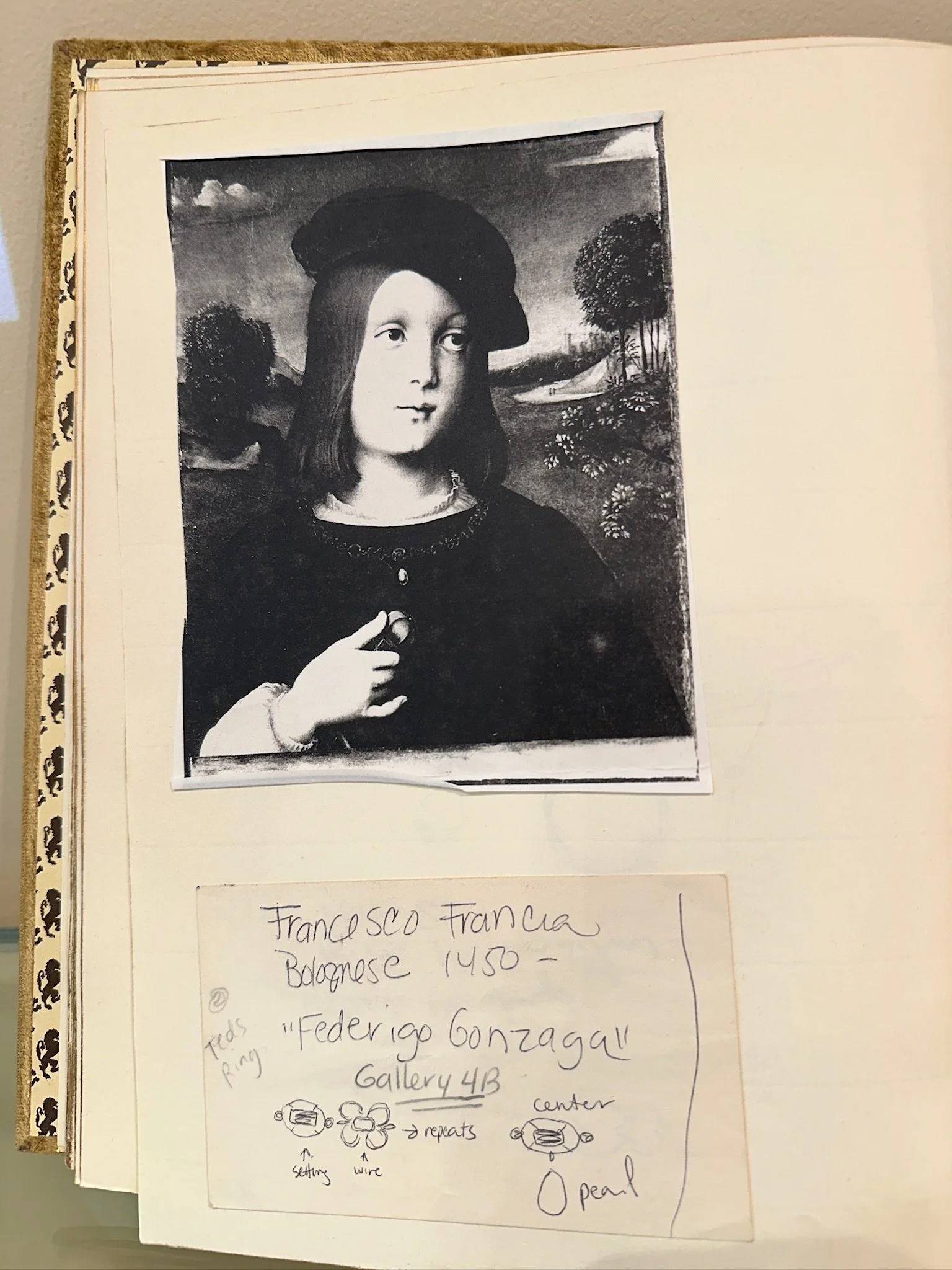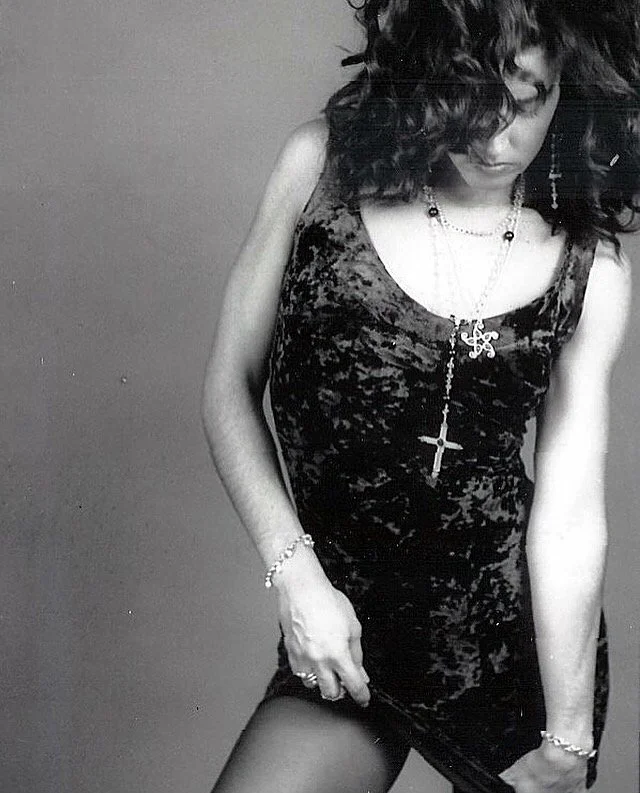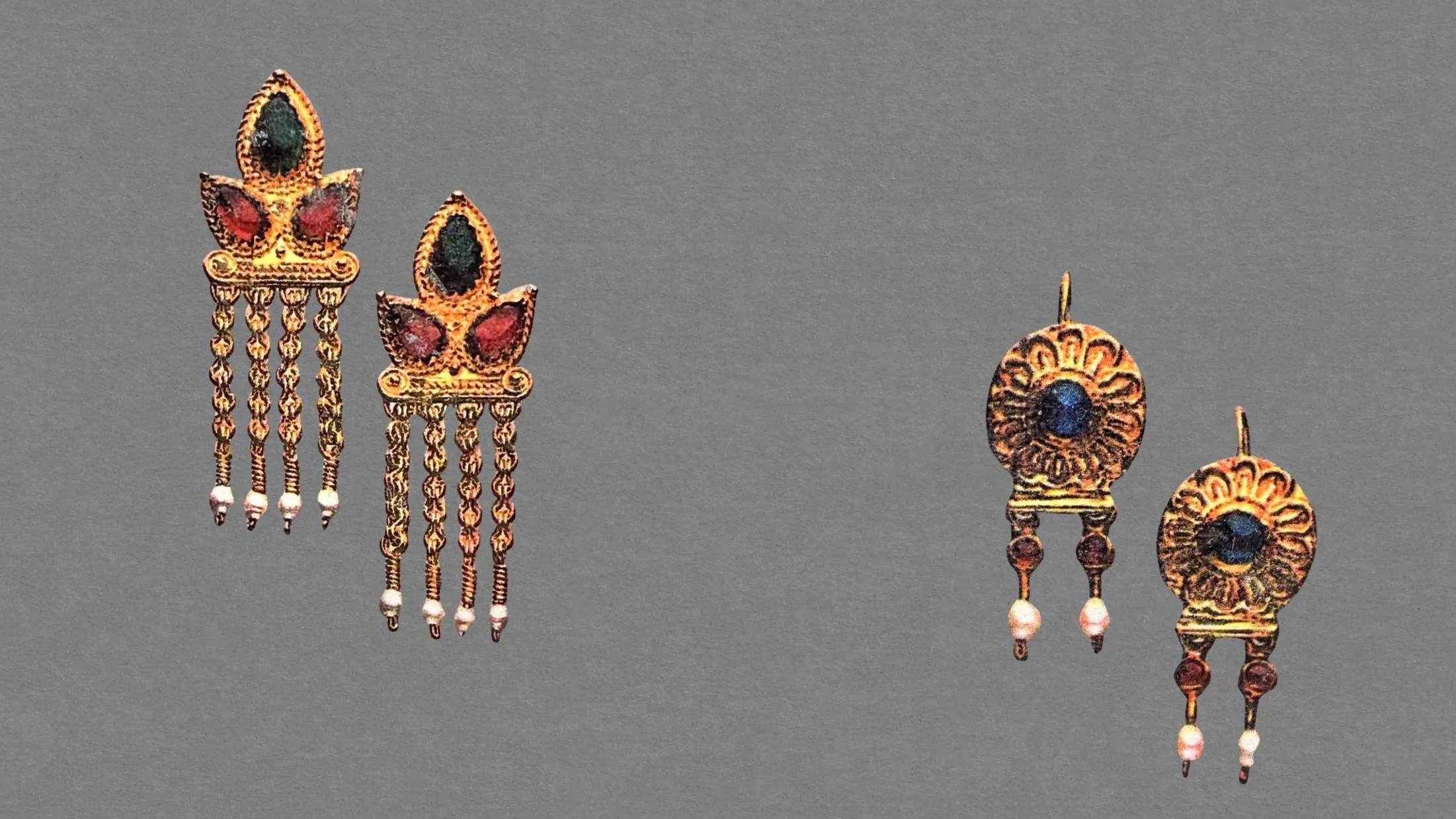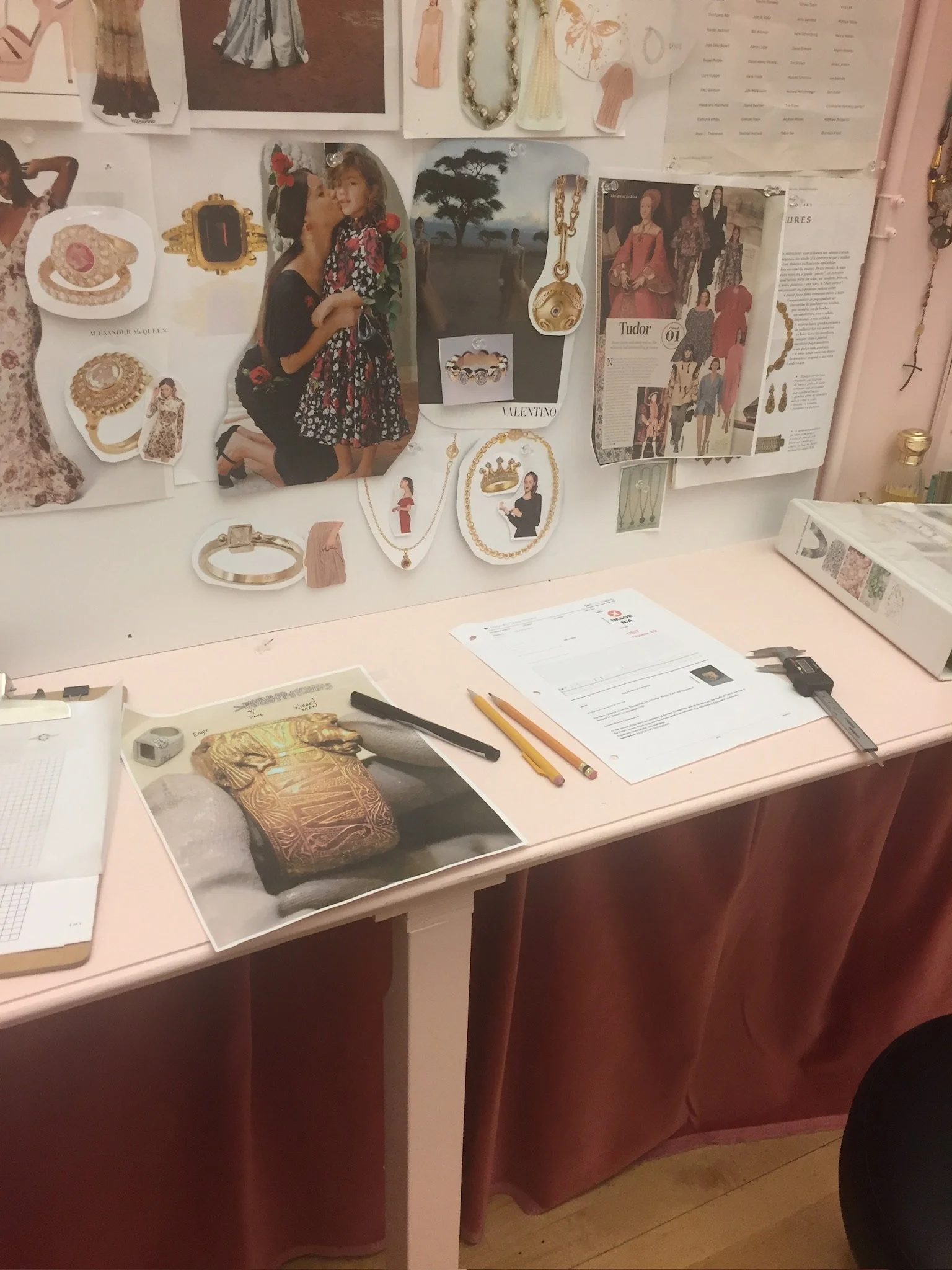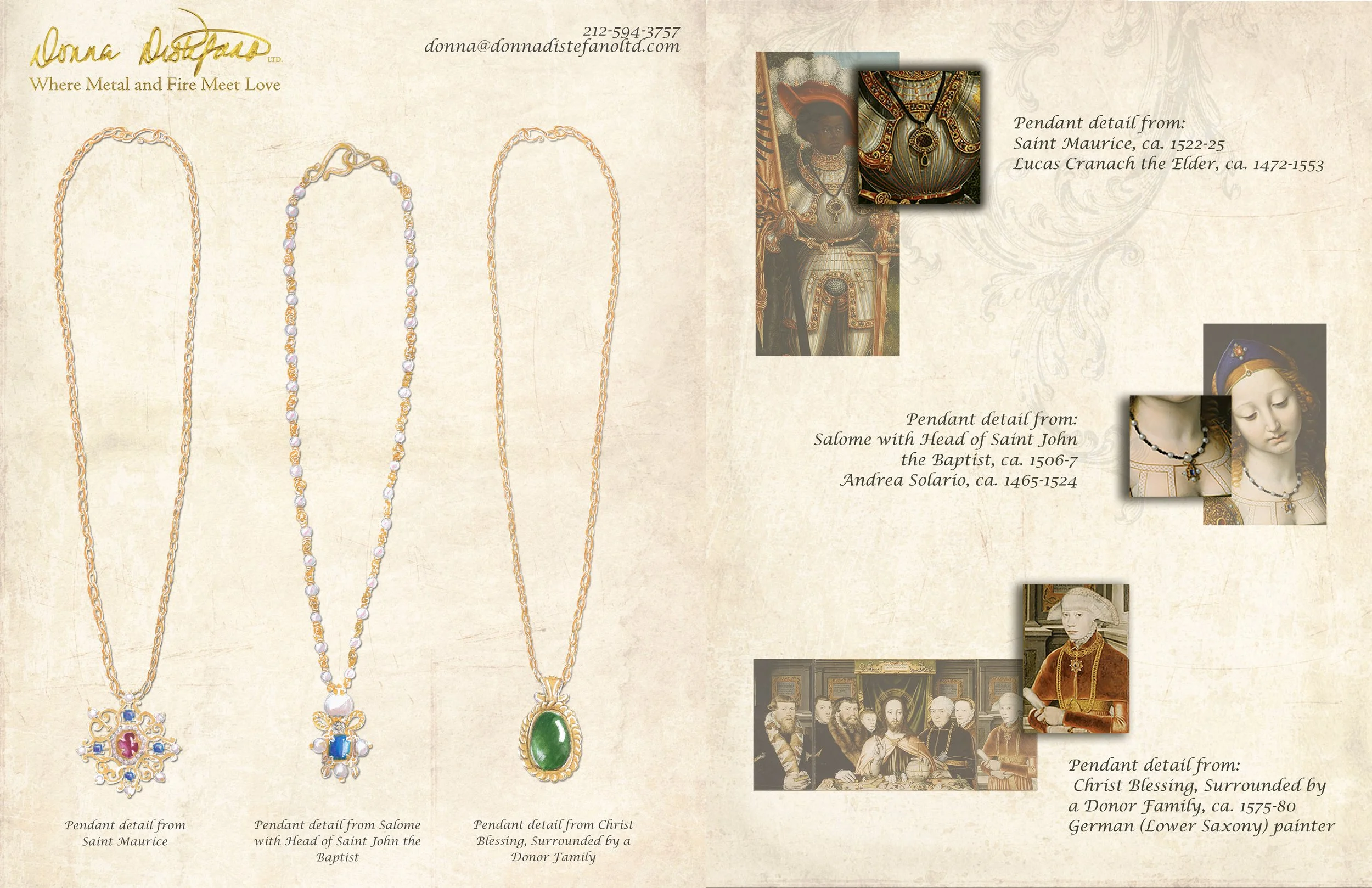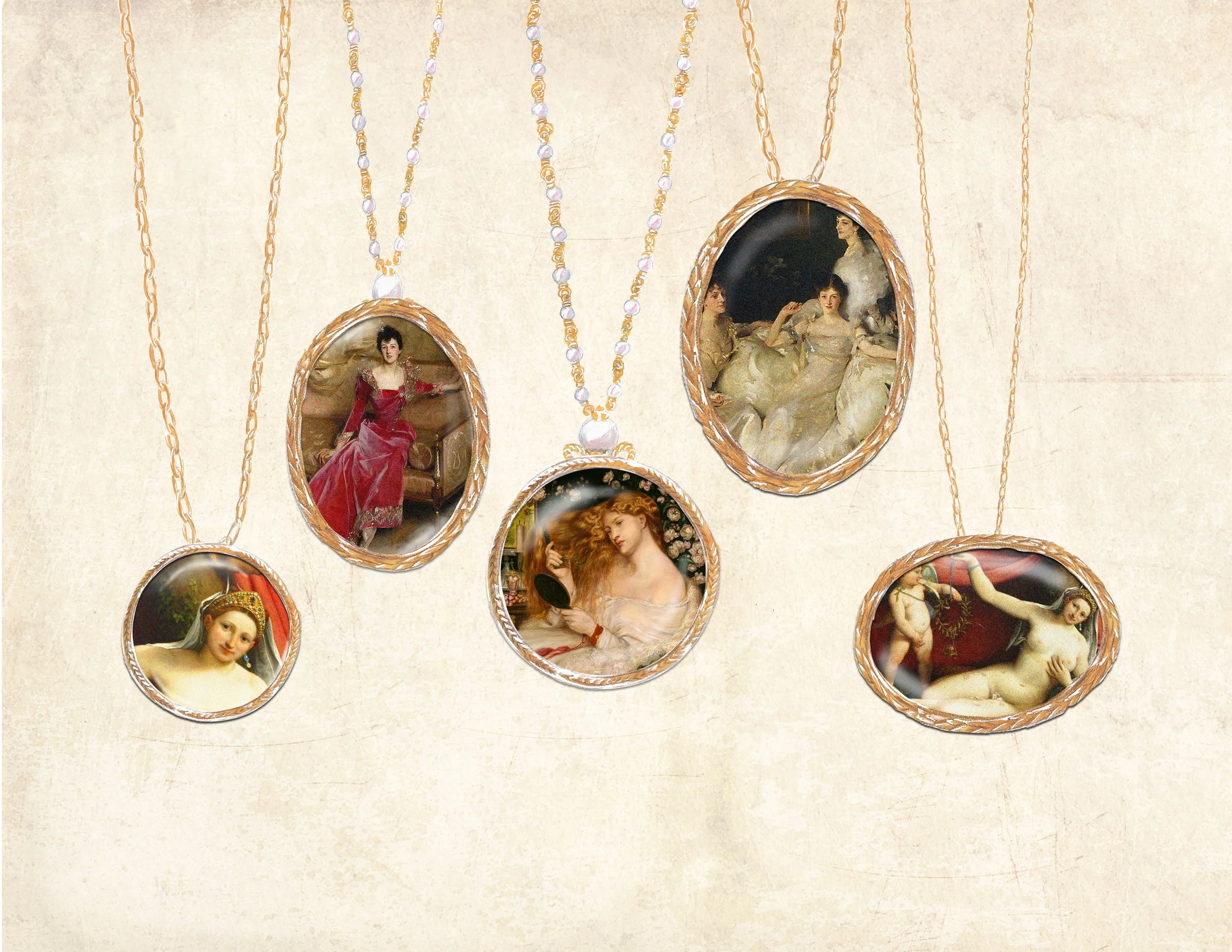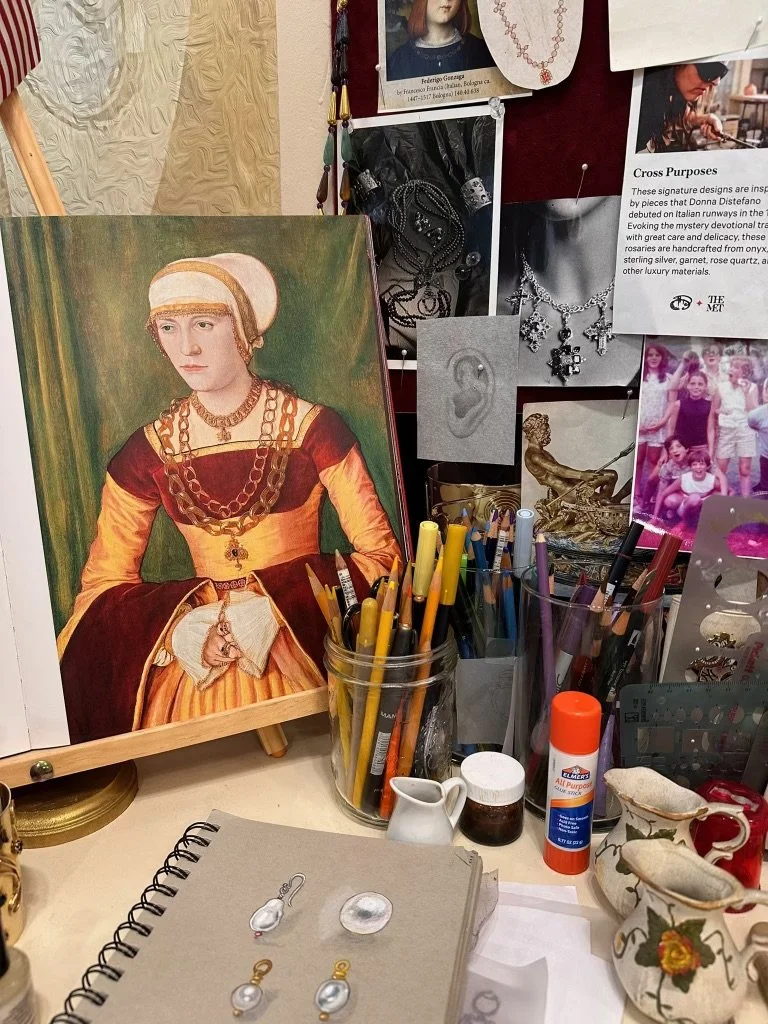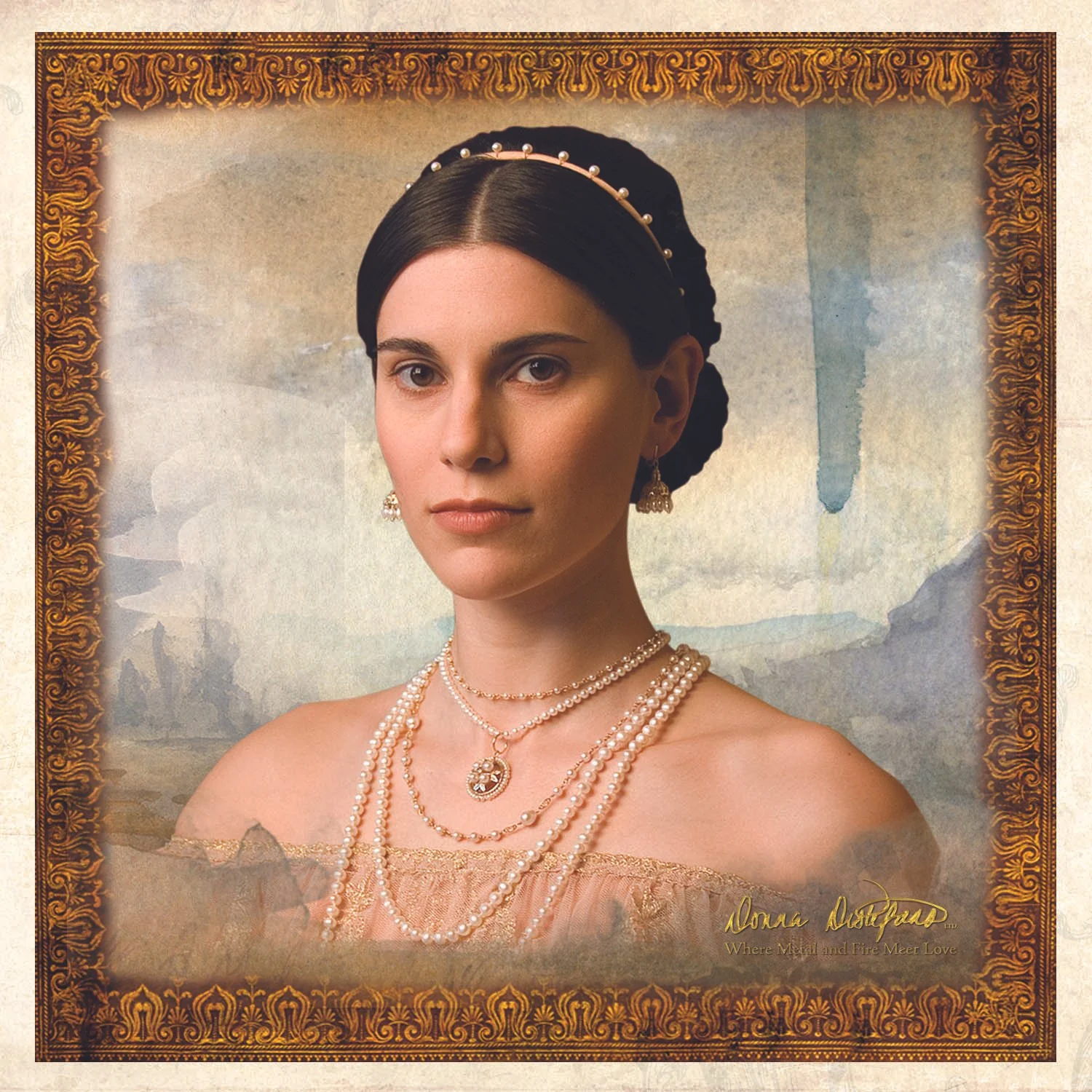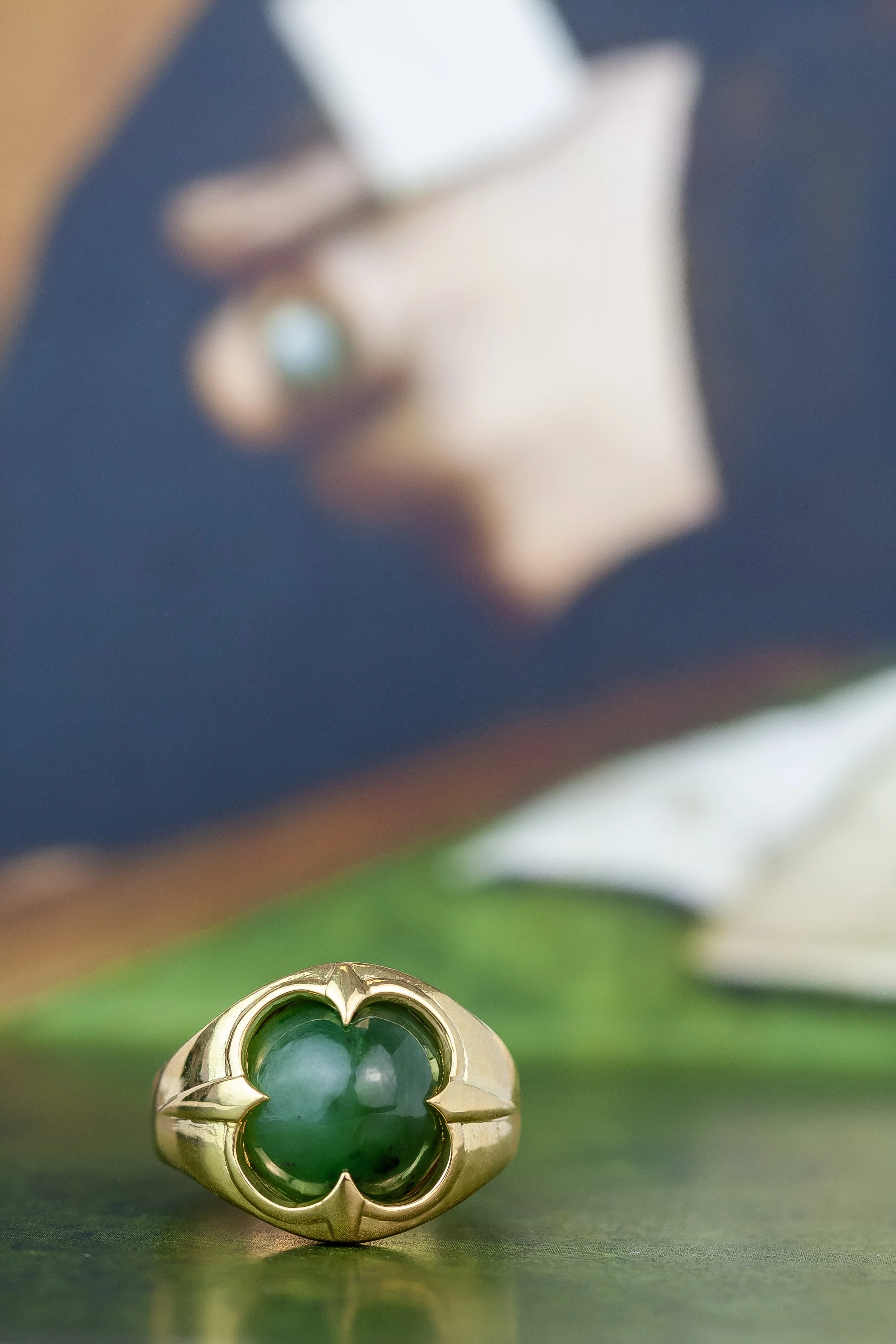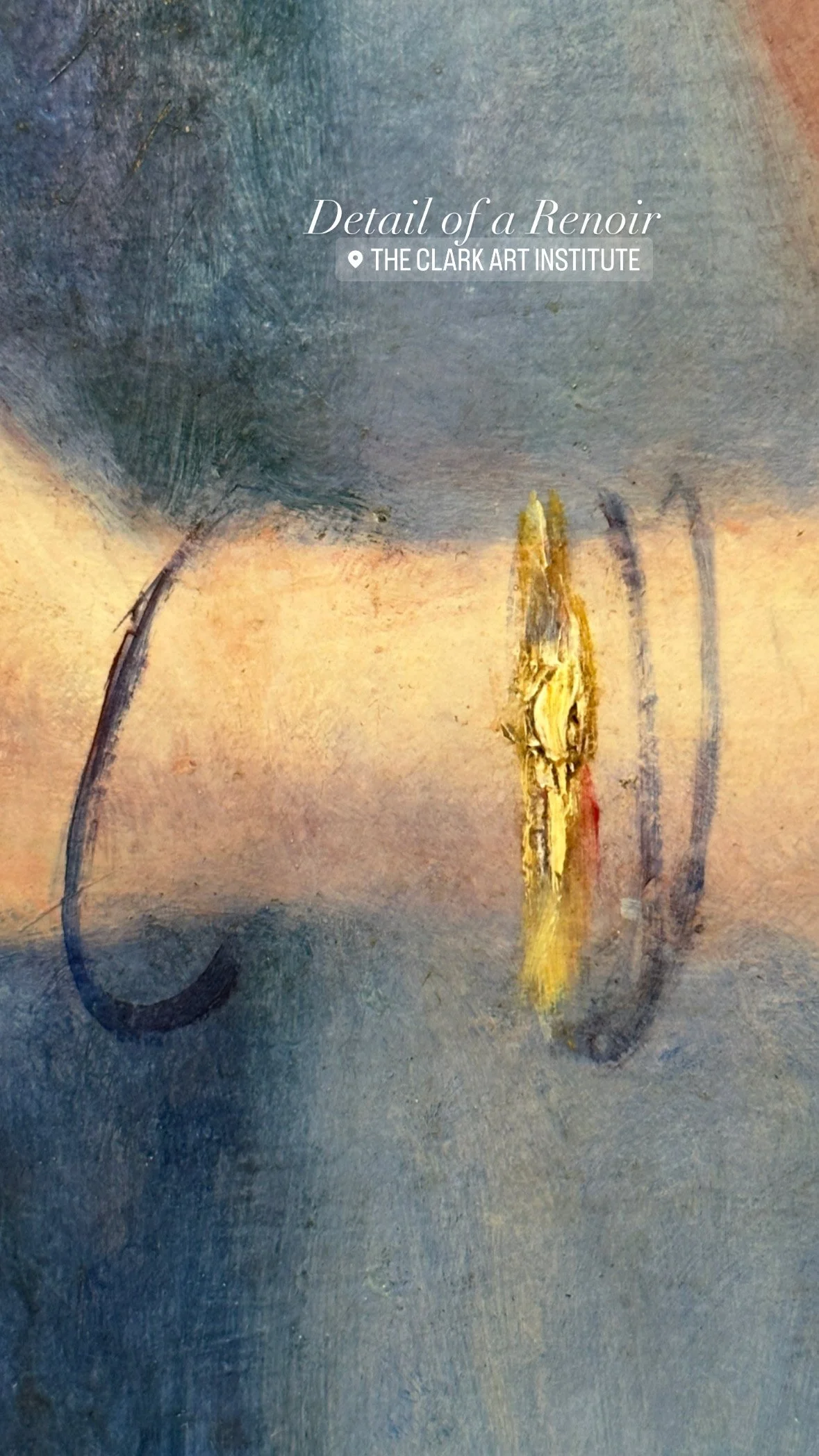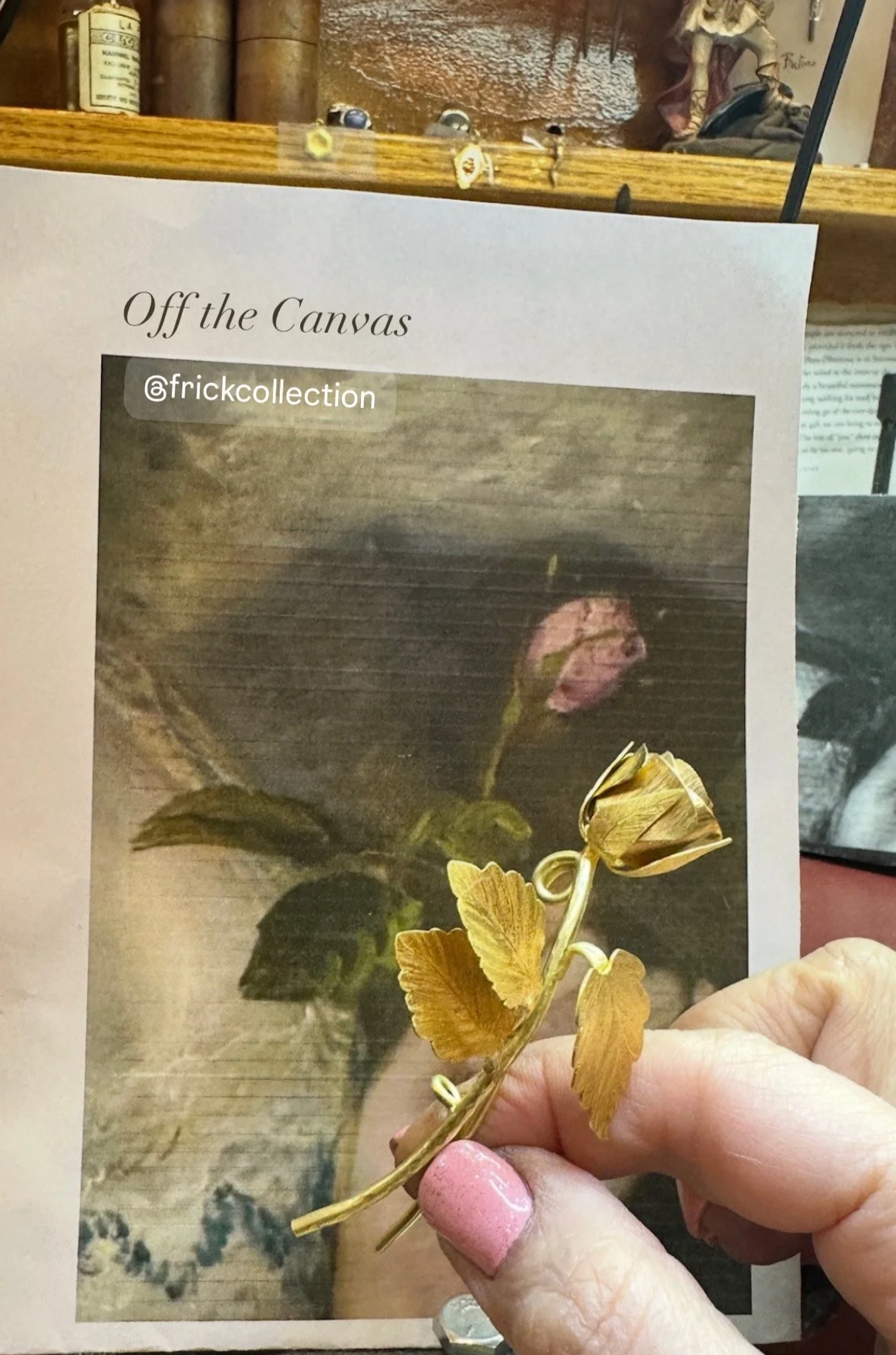Off the Canvas
In 1991, while a goldsmith for The Metropolitan Museum of Art in New York, we were encouraged to use the Met galleries for visual breaks. Our eyes were focused on tiny things for hours straight, and by doing the opposite — viewing large paintings within large galleries — it would open and widen the eyes again. Things at my bench were, among other things, medieval earrings with multiple bezel settings, embellished with tiny pearls, gold granulation, and such. So when I wandered around, I would come across the very thing I was making — not only on display in vitrines but on a canvas in a painting.
My job was to reproduce jewelry that had been acquired by the Met — artifacts from ancient Egypt and through all eras. Given that the Renaissance was my obsession since childhood, I’d take my walking breaks in the European Paintings wing. That’s when I’d later say to my boss, when I was back at my bench, “Why aren’t we making the pieces that are in the paintings? We are reproduction jewelers of high-karat gold, but the people in the paintings are wearing the jewelry that we are reproducing. They are wearing the actual acquisitions or they are definitely wearing the style, era, materials, and techniques of the jewels that survived and ended up here. So even though we don’t have Saint Justina‘s actual necklace, the Met has another one from the same century that Bartolomeo Montagna painted, and clearly, the similar artifacts that we have were exactly what he was referencing 500 years ago. Not only that, but our job is to make these pieces and research the ancient techniques so that the pieces look 500 years old, or 4000 years old, etc. Why aren’t we making things off the canvas?”
OK, so maybe I didn’t say all of those things in one breath, but over the course of my five years as a Met goldsmith, I spent countless hours in front of the paintings and stared at the jewelry in them.
1991 sketch book page: referencing Federico Gonzaga from one of my museum break walk throughs.
2014 sketches of the original Off the Canvas ideas from the 90’s
When the Museum Reproduction Studio made changes and started to farm things out overseas, the focus on craft began to deteriorate. After enough experiences of being unheard — or in my case, just not taken seriously (a fault to no one given the times — it was the early ’90s, and I was in my 20s and 30s and I was a brunette that wore Betsey Johnson dresses. Say no more.) — in 1994, I decided to leave the museum and start Donna Distefano LTD. My mission was and is to preserve ancient metalsmithing techniques and to honor the craft of the goldsmith as art. Because I knew those paintings and painters. I knew they were trained goldsmiths that rendered the wires and granules to perfection. And I also knew that they were artists. The goldsmiths were artists.
Me in my Betsey Johnson dress: don’t judge a book by its cover!
So much of this might sound like not a big deal. But I guess my point is: back then there wasn’t an appreciation for handmade in commerce. This might seem like a no-brainer today but the powers that be wanted to make things faster with poor quality, things that would ultimately crack and fall apart, instead of utilizing the skills of the craftsman. Their argument was: we have a bottom line and we have to sell mass production and more volume. They’d say, “No one’s going to pay what we have to charge for handmade.” My argument back then was, “Why not? This is one of the most important museums on earth. Why not shine the light on the guilds, the goldsmiths, the painters, and the historical aspects of the people in the paintings — and why they are wearing it. It could be a cool story, like an imaginative documentary.”
Tiny things I made at my Met workbench in the 90’s.
My ideas were not understood in those days because, think about it, this was before the popularity of The Tudors, Downton Abbey, and so on. Those types of dramas didn’t exist — at least not in pop culture the way they do today. So my pleas — like a broken record — were ignored, and that’s why I went off on my own.
Design table in the atelier, 2016.
Always with one foot in the door of the Met, the museum remained my mothership — especially because my husband Sean worked there in the capacity of display craftsman from the late ’80s through 2022. Our homebase of friends — who are truly loved ones — were and are still there.
Suffice to say, I never gave up on Off the Canvas. In 2014 and onward, I reached out to the Met again with pitches from things that inspired me. Finally, in 2016 through 2018, they took me up on it — in a very limited way. I made several gold rings for men and women with rubies and sapphires in conjunction with the Michelangelo show, and I made a massive “pope ring” just because we thought it was cool. They wanted me to do it in brass and I insisted on sterling — and they sold out. I did a gold and emerald collection for them too. With my designs and product delivery, I always included the marketing collateral, photography, and backstories to each piece and tried to offer ideas on marketing. I presented each jewel with its inspirational painting and accession number as a way to market the piece for sales. The Off the Canvas concept was turned down and they chose to display the jewelry pieces with no explanation and next to items that were not necessarily related.
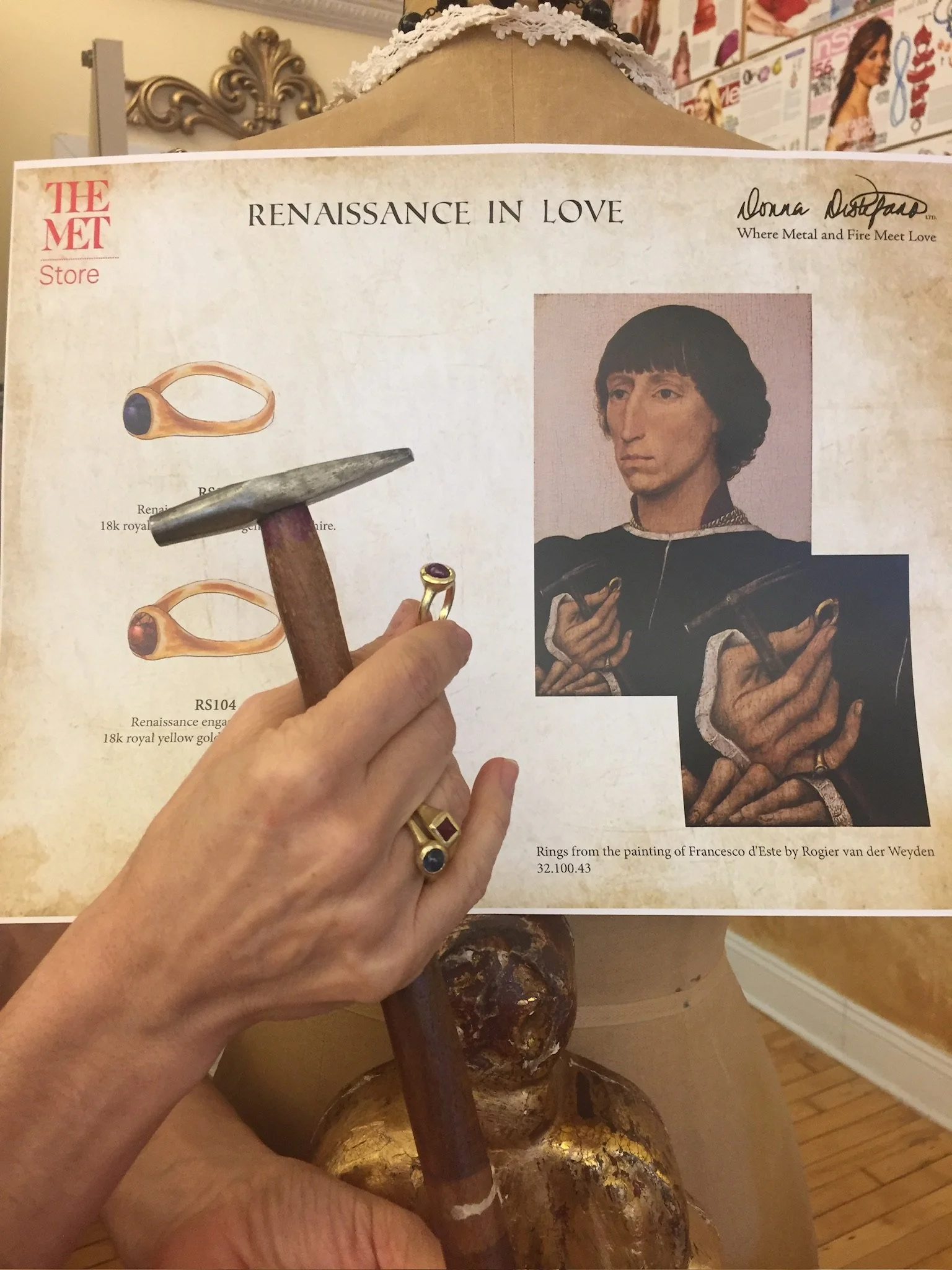
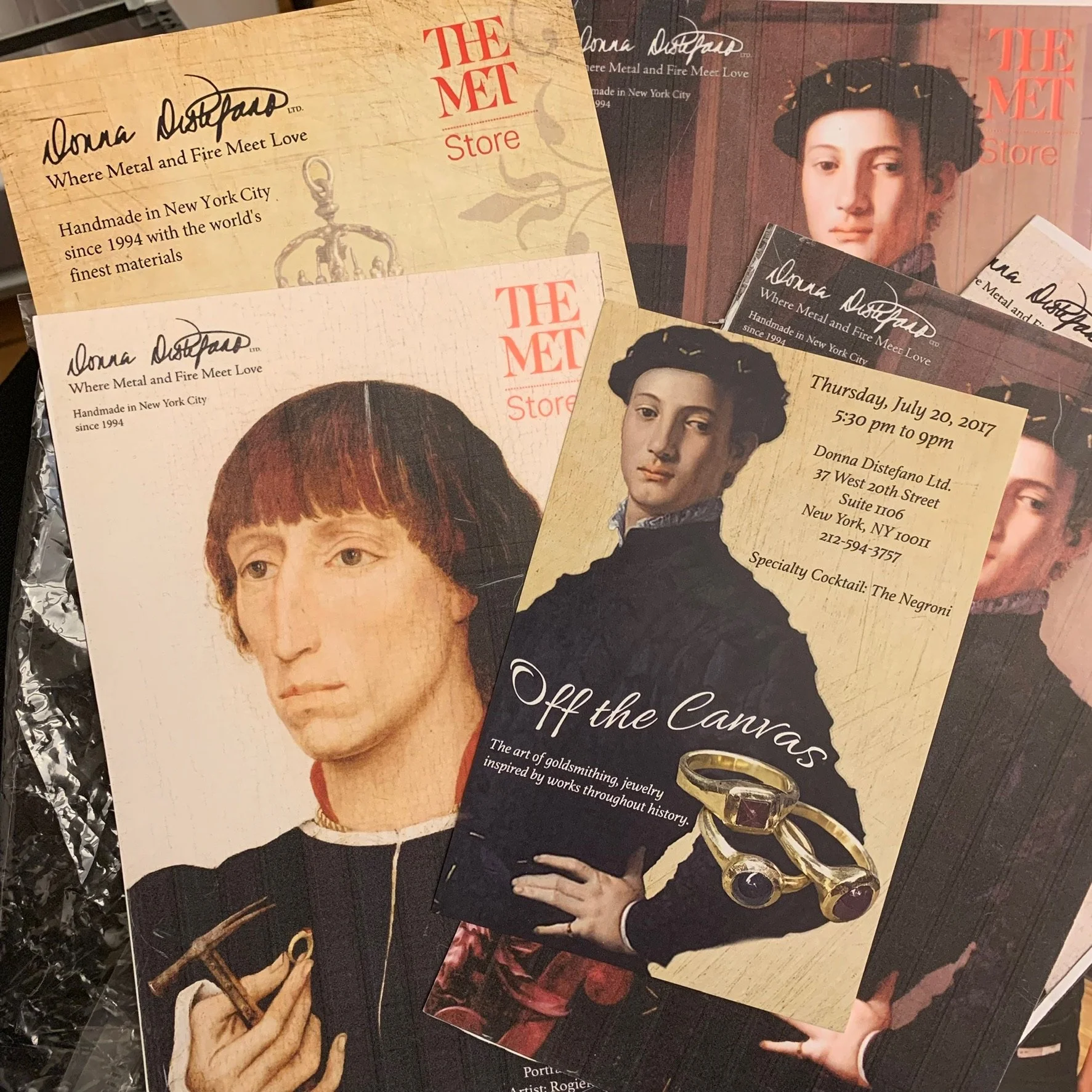
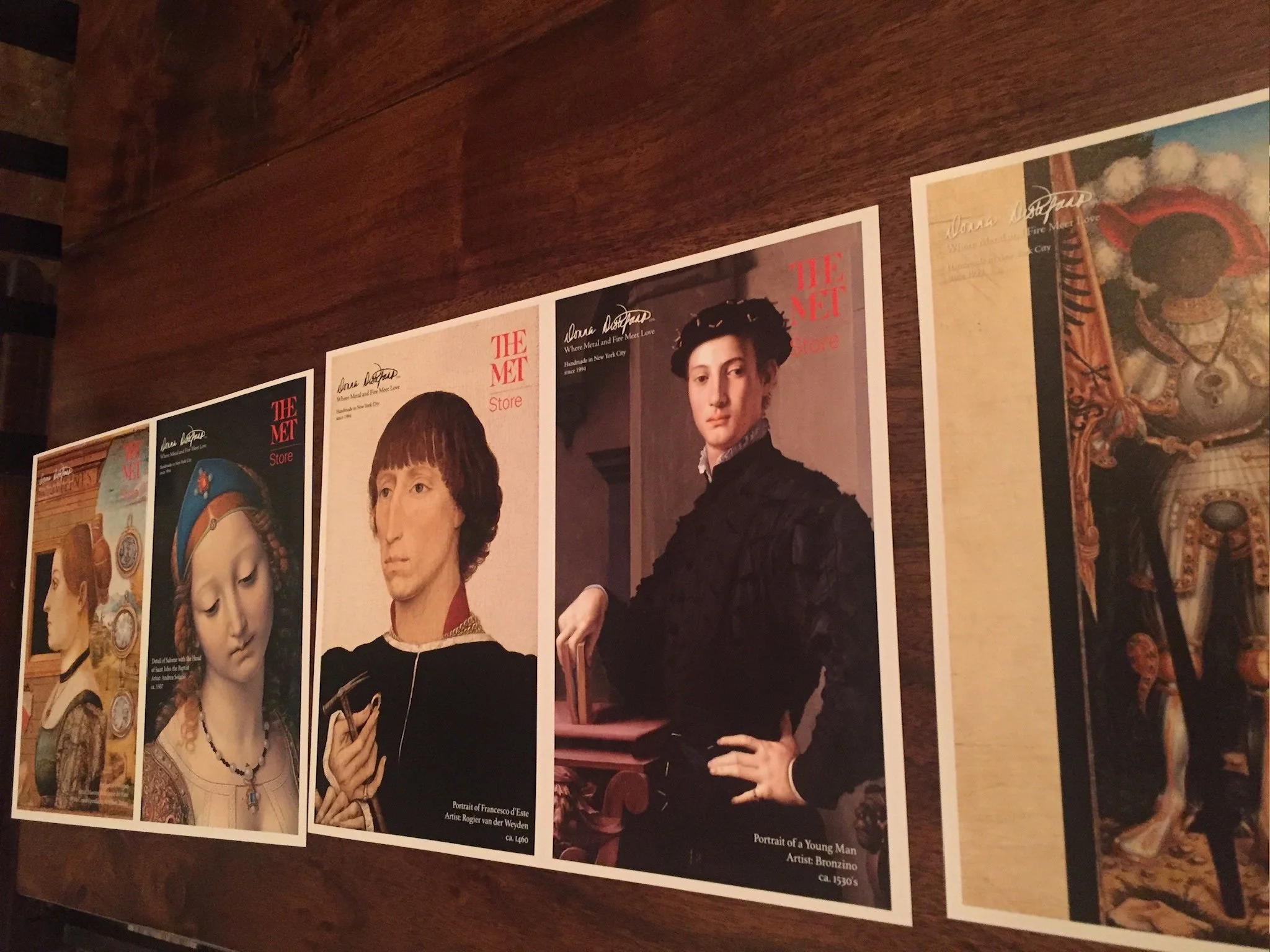
Sometimes things aren’t meant to be — and their rotating teams couldn’t quite grasp my concepts. I was grateful to have been a part of the Heavenly Bodies special exhibition gift shop, but I was equally frustrated that they wanted a low-end price range and I had to work in sterling silver instead of crafting golden inspiration — like some of those sublime Vatican treasures.
So many of the renderings from the 40-page book I gave them never came to fruition, but I’m sharing those pages here.
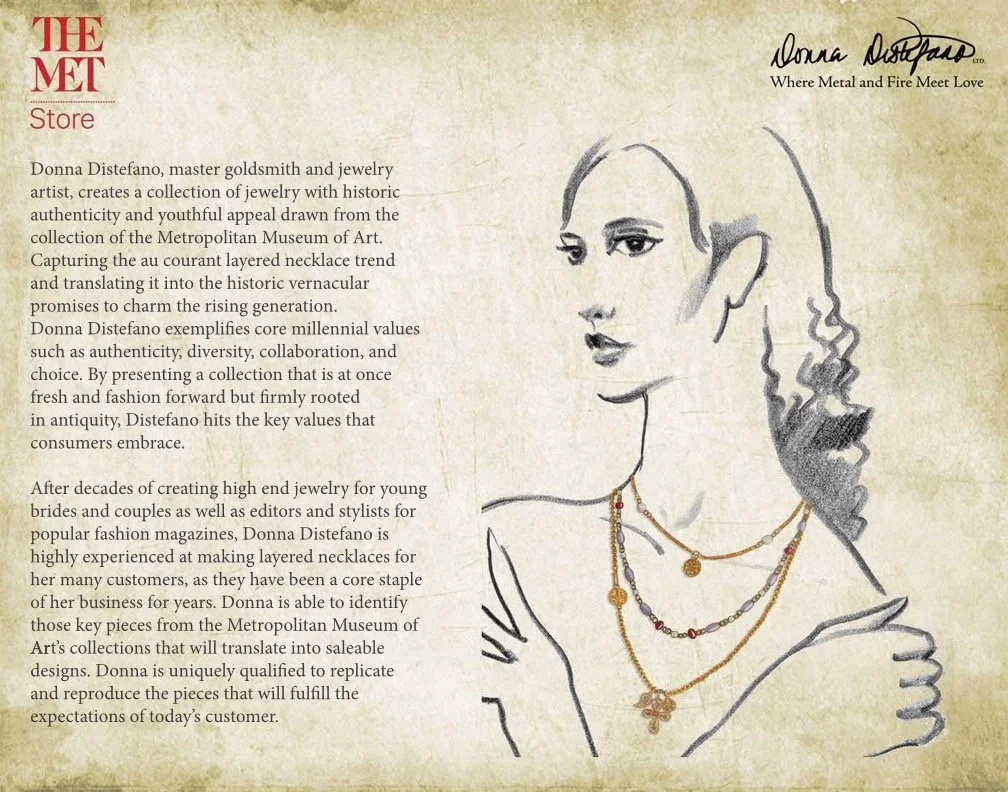
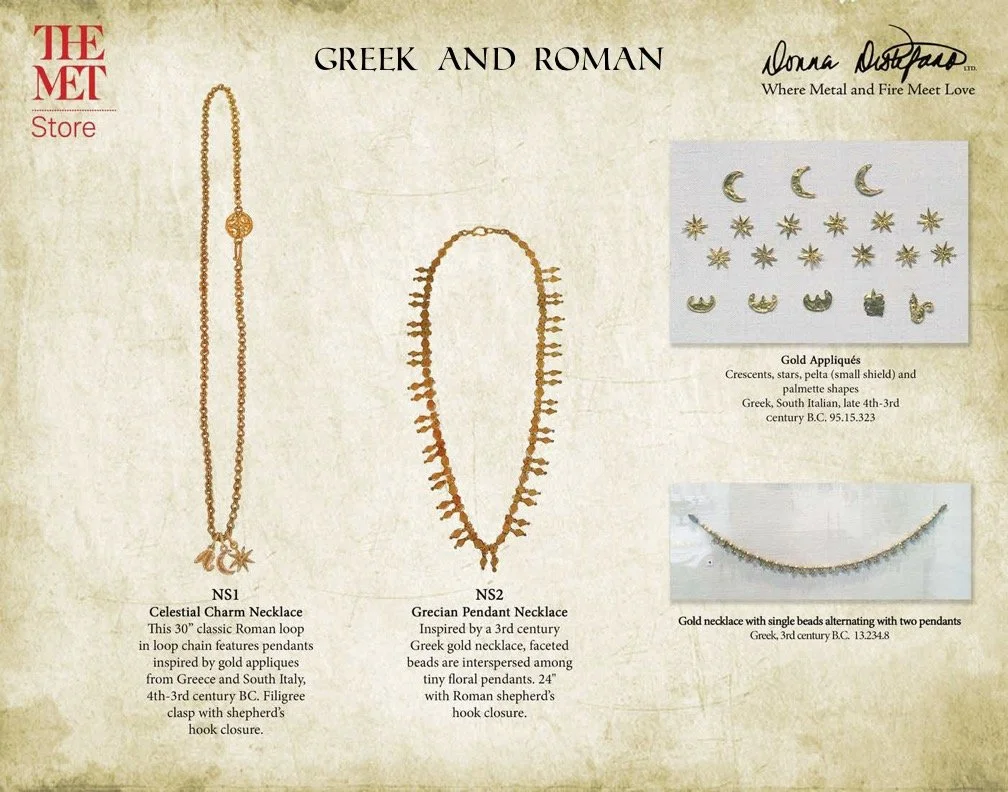

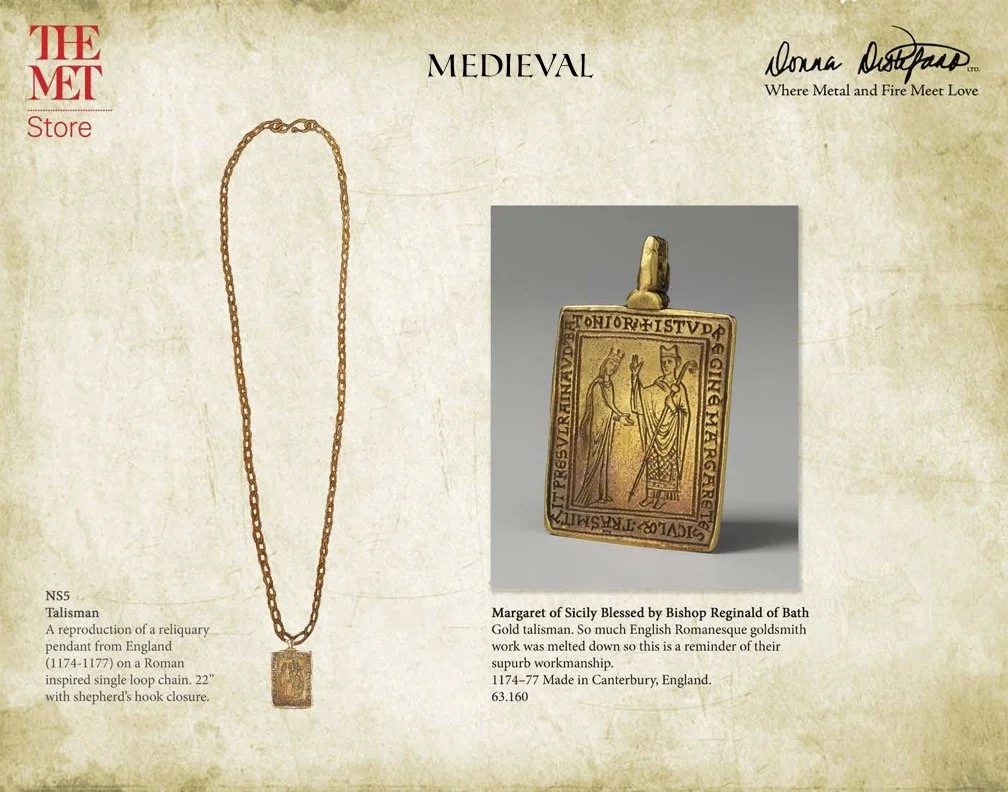

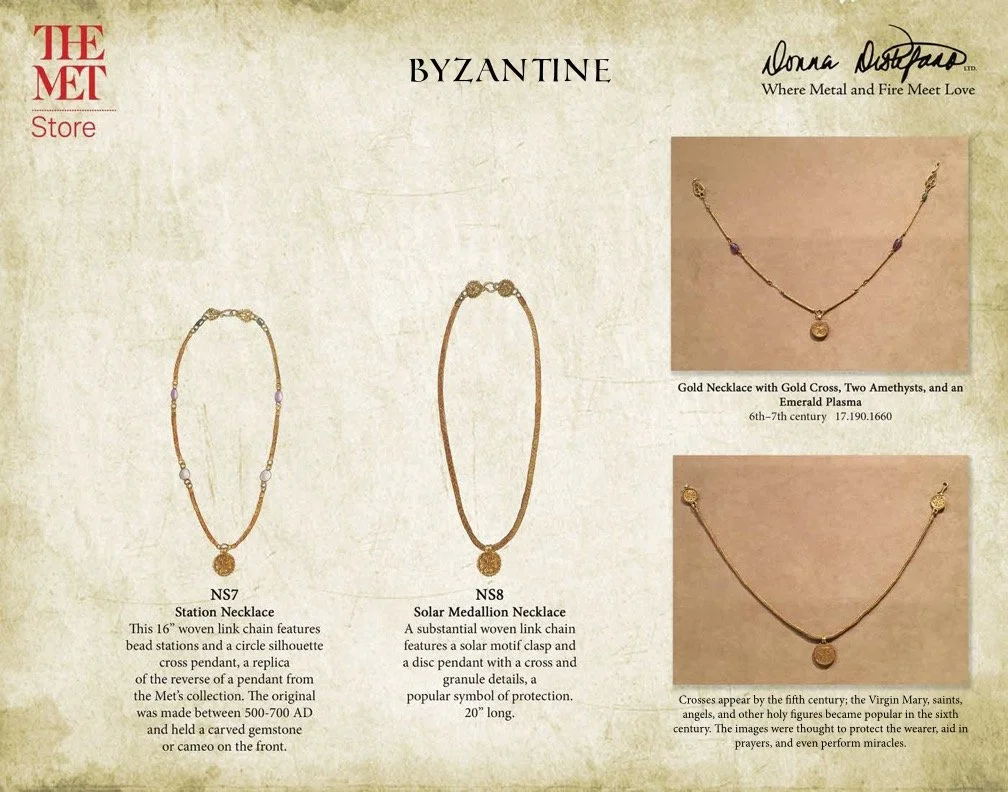
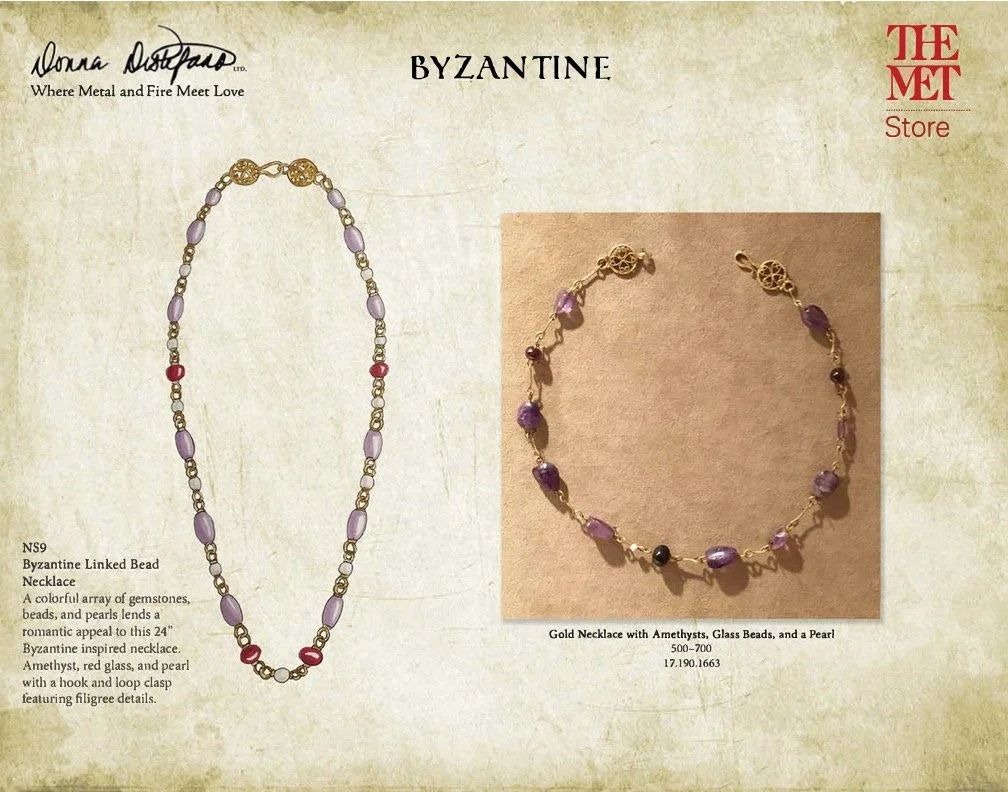
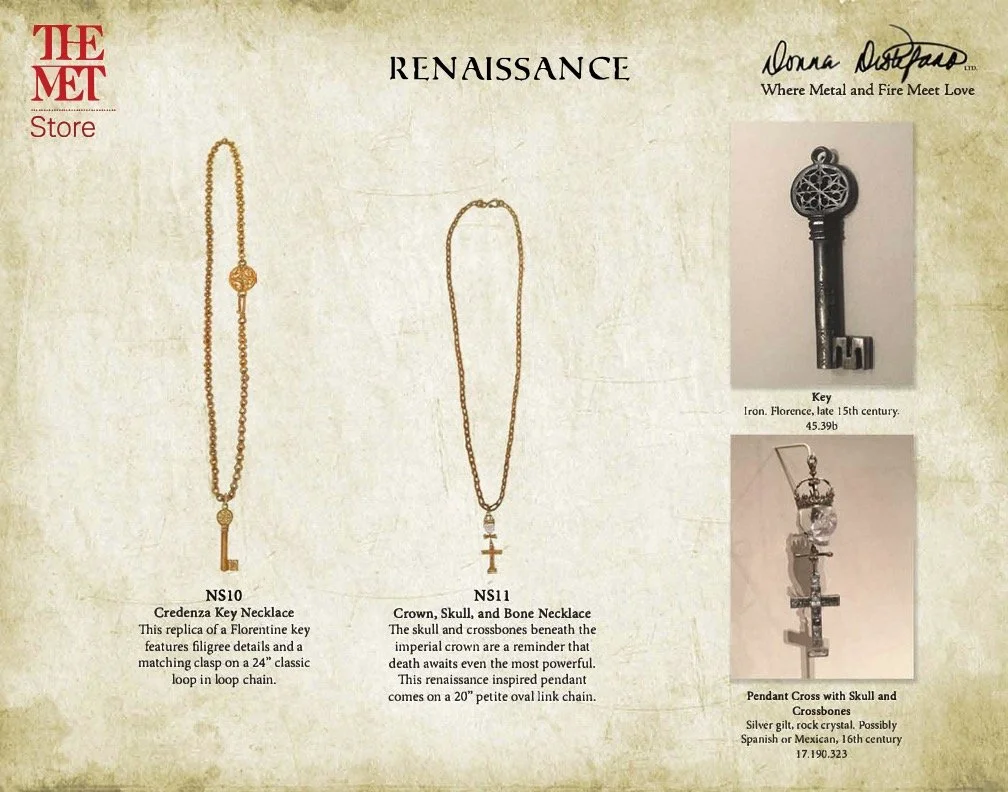


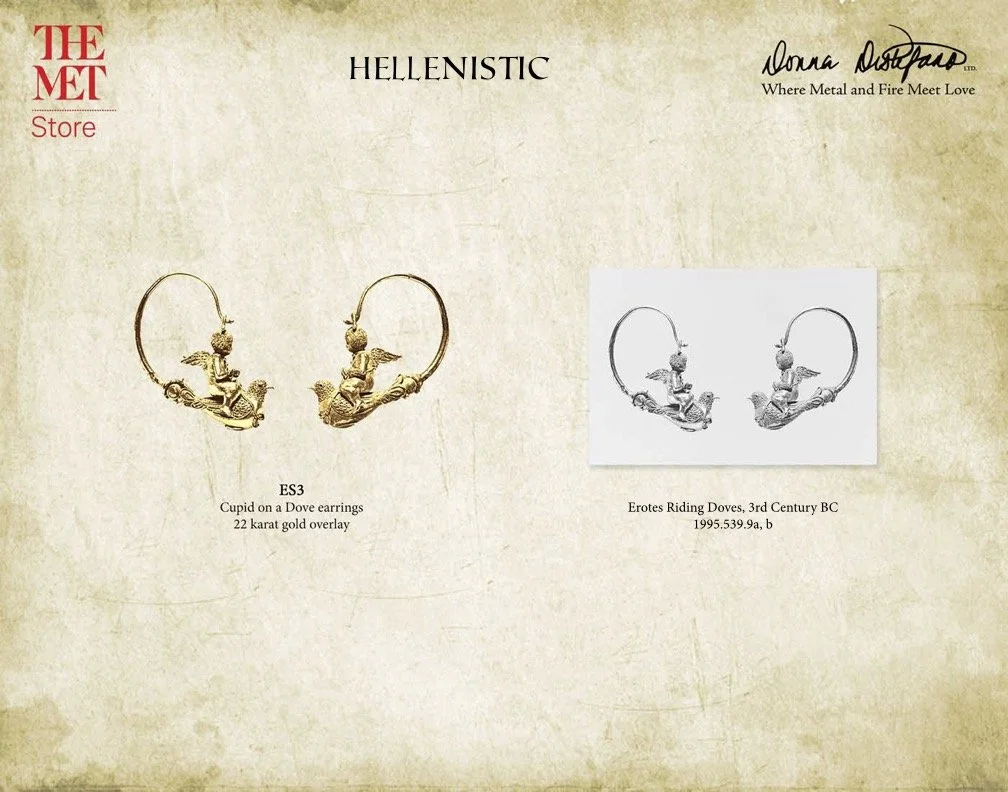
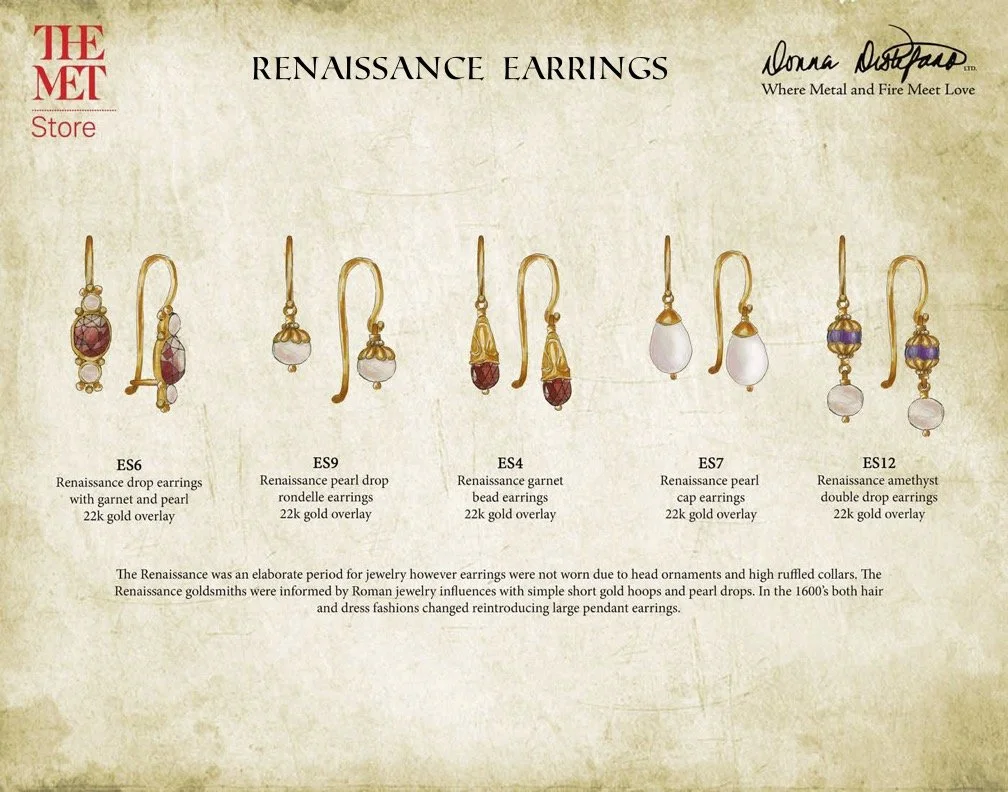
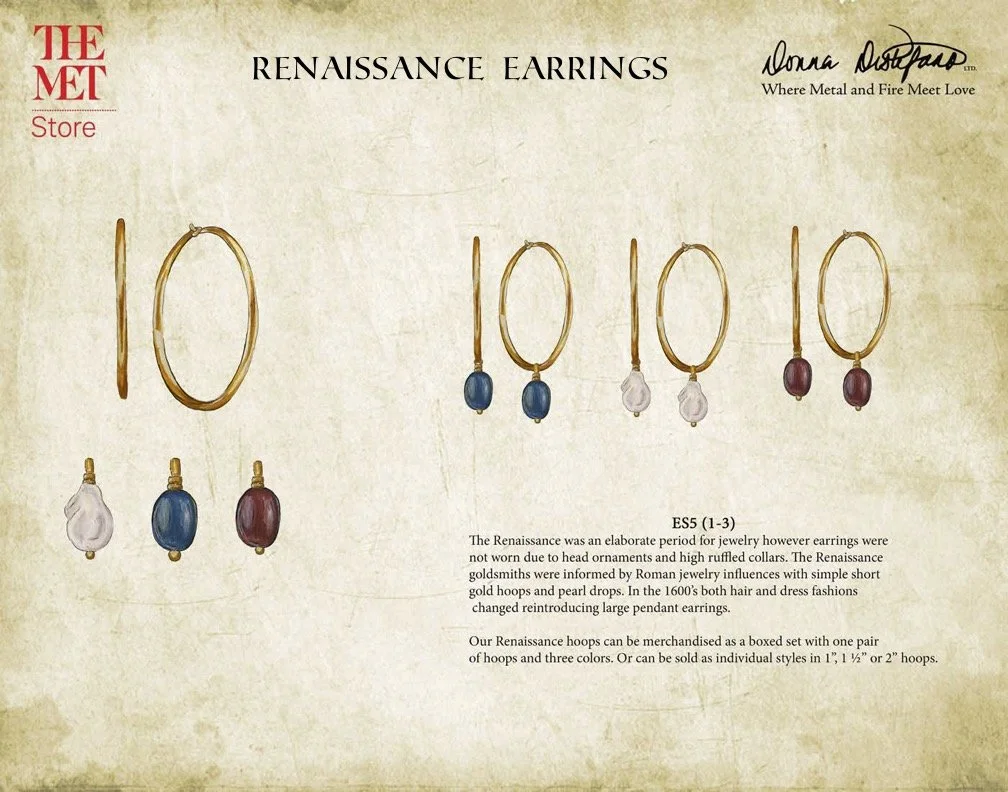
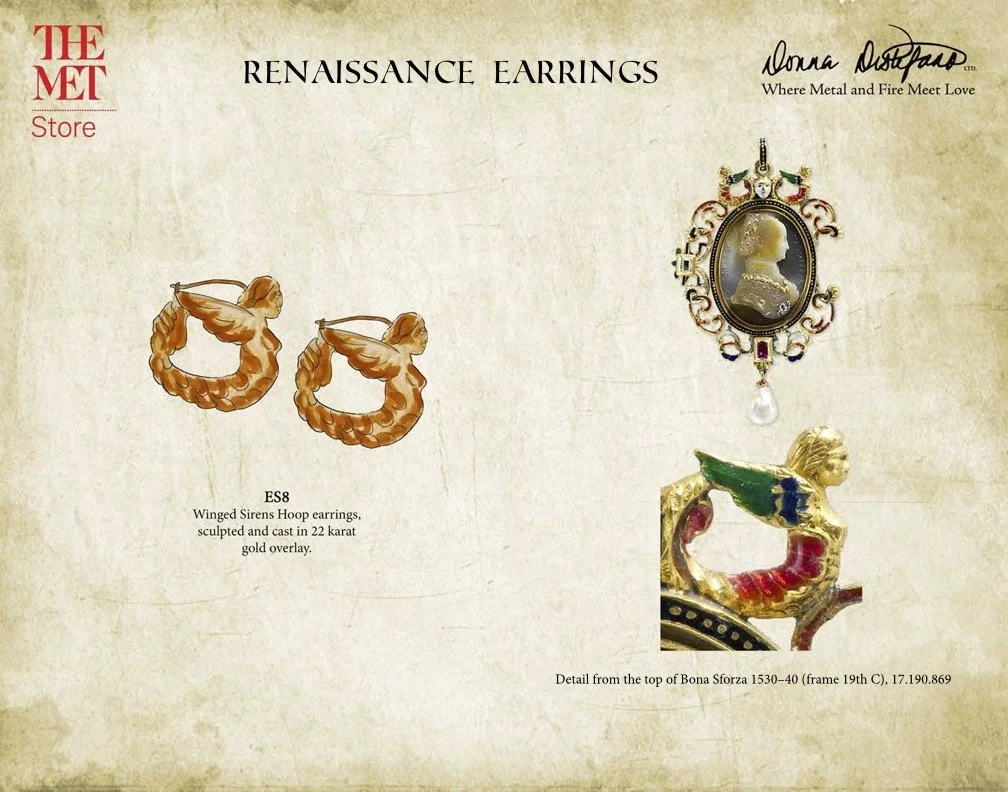



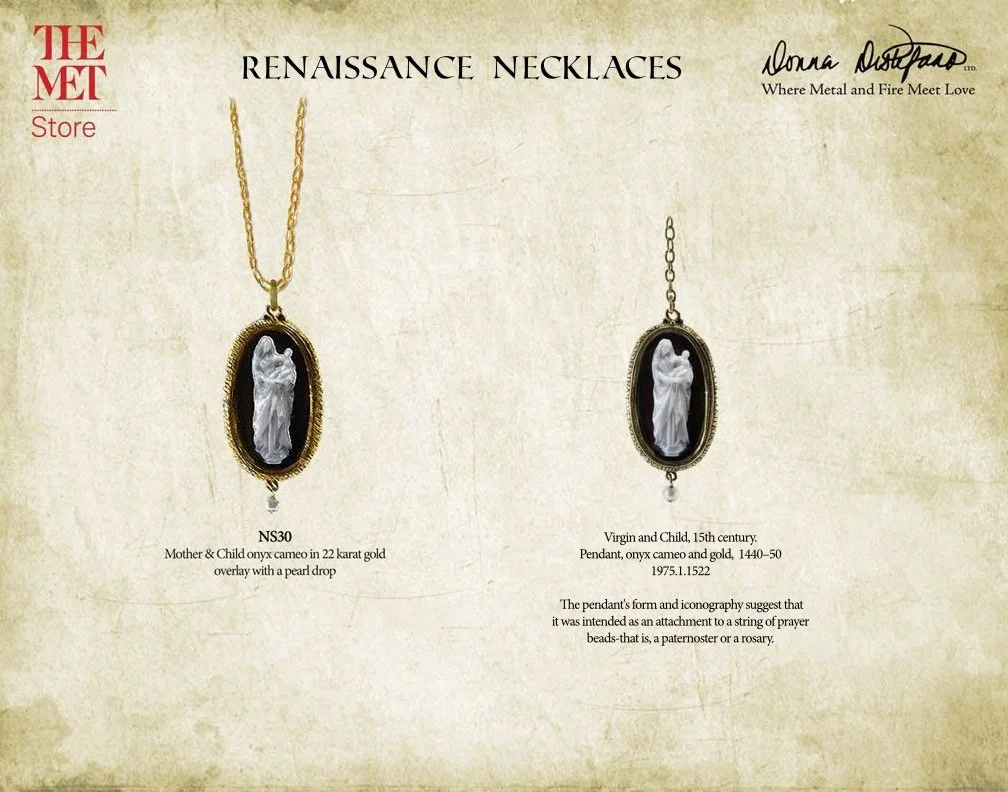
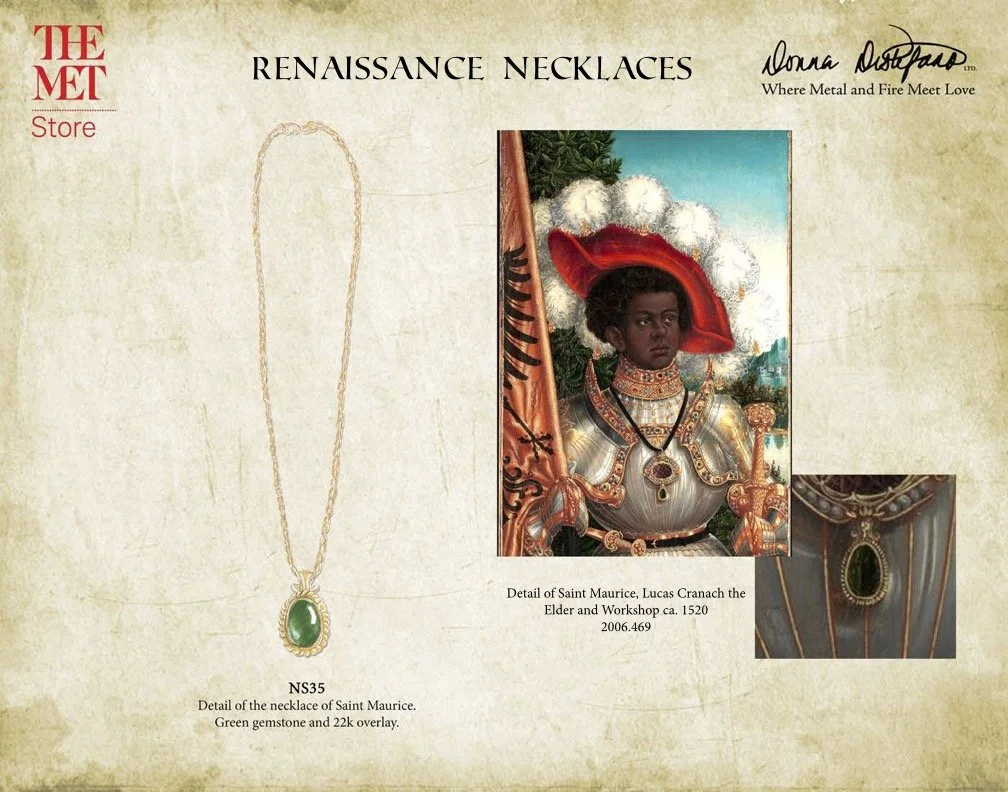
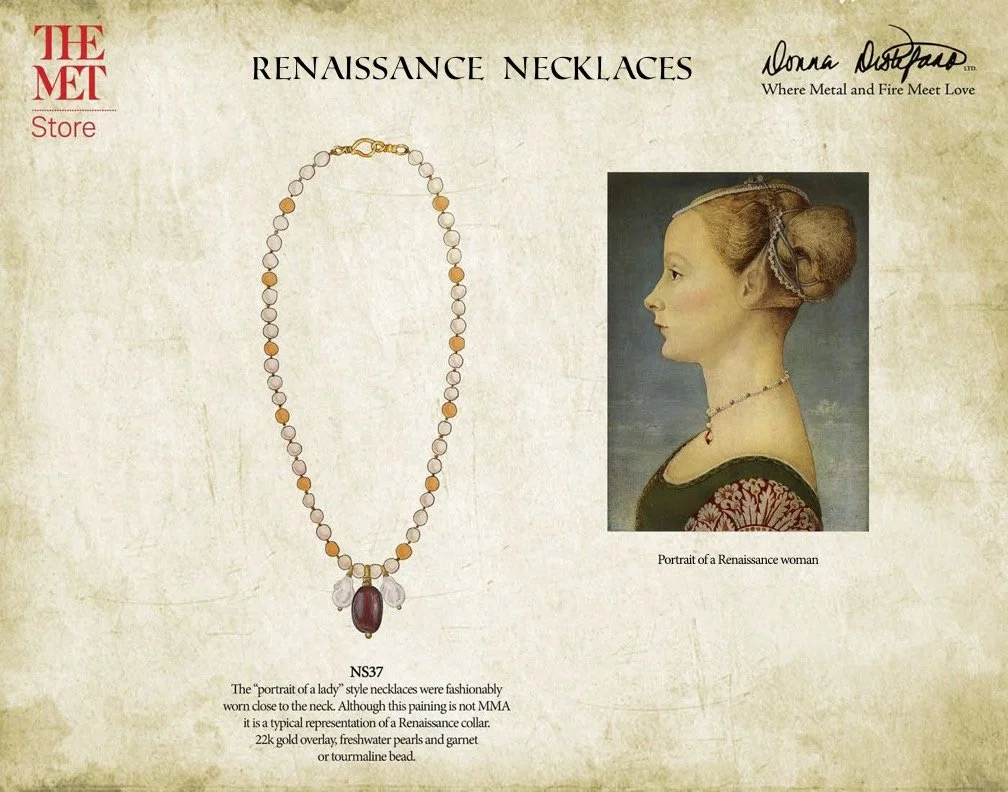
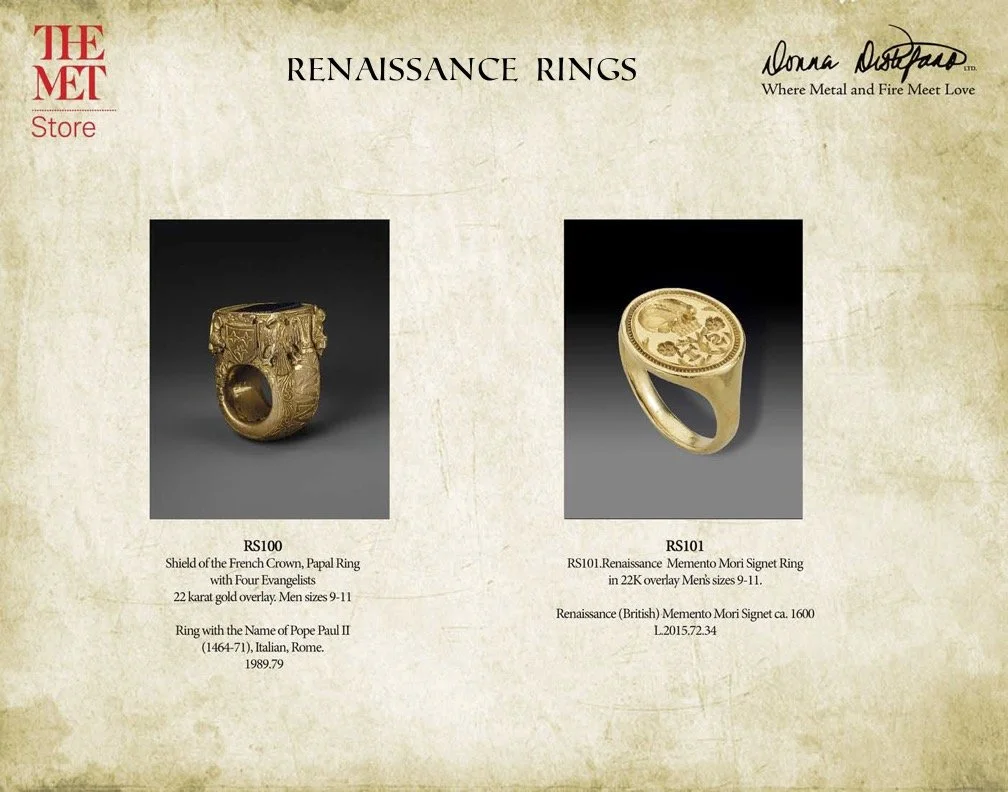

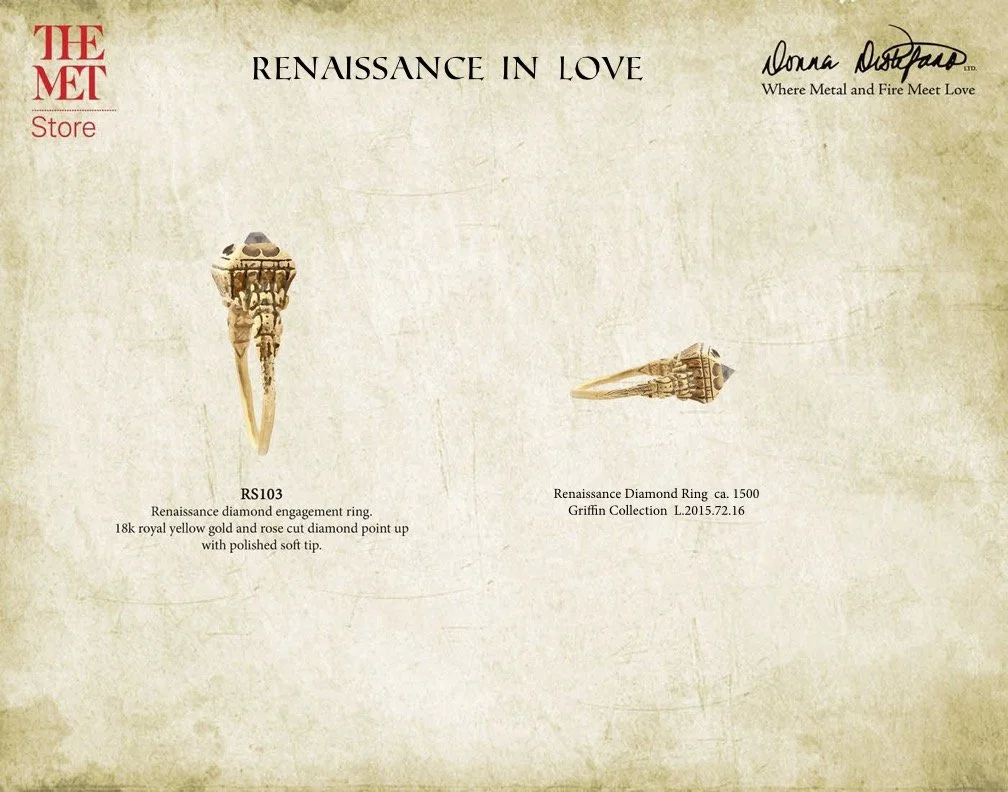

Off the Canvas design ideas 2014
Off the Canvas design ideas 2014
In 2019, with another rotation of store managers, I began to put my focus on some of my other collaborations — like Aerosmith and the Hollywood Vampires. For both collections, although they are very sterling-silver-centric, I have always been able to utilize influences from Byzantium, the Renaissance, and Medieval eras. It never surprised me that the rock ’n’ roll crowds were totally drawn to the ancient motifs — like skulls, bones, wings, and feathers. People often ask, “What’s the connection between these museums and Aerosmith?” Well, there it is. And also, Joe Perry is a big, big fan of fine art and craft — and Joe has always been my patron and catalyst into that rock ’n’ roll world.
After the pandemic, we continued in the studio to focus on Off the Canvas for private clients, as it had always been an important collection — given that the studio is overwhelmingly driven by paintings.
Design table in the atelier, 2024.
Backtracking to 2005, I was visiting Villa Borghese in Rome and was mesmerized by the Raphael Portrait of a Lady. When I returned home, I asked my friend Milena Govich, who is a beautiful actress (and now a beautiful director), if she would model for me if I styled her into Renaissance paintings. I gathered a team of creative friends in hair and makeup and everyone nailed it. I was really grateful to them for helping me create the marketing material for my Portrait of a Lady collection. The photos look dated, but I’m still pleased with them. I always chuckle at knowing that Milena was wearing yoga pants since we only shot her three-quarters up.
Portrait of a Lady Raphael inspired photoshoot, 2007. Photos by my father in law Charles Thomas.
Portrait of a Lady Raphael inspired photoshoot, 2007. Photos by my father in law Charles Thomas.
I’m not sure exactly what it is that makes me love jewelry and paintings so much, but I kept it going in my studio. My friends at the museum would often say to me, “Why don’t you approach the Frick with this?” I’d say, “Yeah, if only! I’d love that.” I had met Ian Wardropper at The Metropolitan Museum-- the Met and the Frick had always been like close cousins. I wanted to reach out sooner, but then the pandemic happened, and after that I got really busy with the bands, and then the Frick temporarily moved because of their renovation. They were always on my mind, though.
As they started to settle back in, a friend of Sean‘s introduced us to the Frick’s Kate Gerlough. Kate came to visit me and Sabrina back in 2024, and we felt like it was a marriage made in heaven. To me, Kate was like oxygen — because she was understanding all of my concepts and she was very eager to turn Off the Canvas into a central project for the Frick’s new museum store. Almost a year later, we installed Off the Canvas with a custom glass museum display by none other than Sean Younger Thomas, and I was encouraged by Kate to choose my favorite paintings and share those ideas with her. We collaborated on what we opened with, and it has been a dream come true. These ideas finally have a home.
Margareta bracelet in 22-karat gold. Off the Canvas of Anthony van Dyck’s portrait Margareta deVos.
Me, Sean and Sabrina worked the opening events, which was an enriching experience. I got to interact with different people on different days — meaning each opening was for a specific group of people. I got to see how different people responded and what kind of questions they were asking. This informed me tremendously, and I was able to run back to the studio and fill in the gaps where needed. I’m continuing with that process today, given we’re only four months in. I’d like to do more with diamond rings and chandelier earrings — and of course the Vermeer pearls. The patrons are also my oxygen, because they understand and appreciate what Off the Canvas is without an explanation.
Cromwell Signature in 22-karat gold and nephrite. Off the Canvas of Hans Holbein the Younger’s Thomas Cromwell. (Our ring is called “Signature” because Cromwell’s signature is hand engraved on the inside.)
Museums need our funding if we want to preserve history. There’s no two ways about it. For me, making beautiful jewelry that is inspired by historical eras in time — that we can only imagine — is my way of contributing. I think it’s a cool way of storytelling and to learn about the jewelry techniques of the goldsmiths, to understand more about the guild systems, and to try and imagine what the life of someone like Hans Holbein was like. Imagine — he was the king’s painter, but he had a serious side hustle as a jewelry designer. To me, that just blows my mind.
It is my hope that jewelry design and Off the Canvas can be an inspirational vehicle to learning about different cultures, humanity, and world history.
Inside Weddings feature of Off the Canvas portrait pendants Fall 2009.
Off the Canvas inspiration and bespoke designs.
Off the Canvas inspiration at the Clark Institute. Day tripping for me usually includes museum visits wherever I am.
The last item completed for Off the Canvas before the Frick’s 2025 reopening. I’m particularly fond of this handcrafted gold rose because it links back to where I first began.

